How to increase the accuracy of ultrasound-guided vascular access?
The aim of this observational cohort study was to investigate whether adding guidance markers on a US system would increase the accuracy of US-guided needle tip placement compared to no guidance markers” Thorn et al (2016). Abstract: Introduction: Peripheral ultrasound (US)-guided vascular access is gaining popularity. Though studies have demonstrated that US-guided vascular access has […]
Air embolism prevention after tunnelled central venous catheter removal

We present a useful technique that may prevent vascular air embolism and severe bleeding” Letachowicz et al (2016). Abstract: Introduction: Severe, life-threating, complications might occur on dialysis catheter removal. [ctt link=”0pEbz” template=”1″]ReTweet if useful… Air embolism prevention after tunnelled central venous catheter removal http://ctt.ec/0pEbz+ @ivteam #ivteam[/ctt] Methods: We present a useful technique that may prevent […]
Vascular access cannulation is an essential skill for dialysis nurses
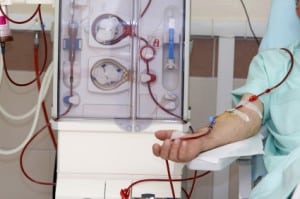
The risk of an acute VA complication could be reduced with appropriate training of nurses, physicians and patients. This could potentially prolong the VA life” Parisotto et al (2016). Abstract: Background/aim: Vascular access (VA) cannulation is an essential skill for dialysis nurses: failure to correctly repeat this operation daily may result in serious complications for […]
Article describes how to insert a peripheral cannula
Peripheral cannulation is a common procedure that requires high standards of care and management to optimise patient outcomes” Shaw (20016). Rationale and key points: This article aims to assist practitioners to undertake the safe and effective insertion of a peripheral cannula. It provides information on best practice related to peripheral cannulation with an open-ported safety […]
PICC line and Midline catheter comparison
Peripherally inserted central catheters (PICCs) are a commonly used central intravenous (IV) access device, which can be associated with significant complications. Midline catheters (MCs) are peripheral IV access devices that may reduce the need for central lines and hence decrease central line-associated bloodstream infections” Xu et al (2016). Abstract: BACKGROUND: Peripherally inserted central catheters (PICCs) […]
Are peripherally inserted central catheters superior to central venous catheters?
A Power PICC may be a better choice than a CVC in patients undergoing devascularisation requiring catheterisation” Jing et al (2016). Abstract: Peripherally-inserted central catheters (PICC) have a greater retention time and less complications compared to central venous catheters (CVC). The study was conducted from From January of 2014 to December 2015 at Beijing DiTan […]
Development of a peripheral intravenous catheter insertion skills checklist

To date, there is no published, psychometrically validated, short peripheral intravenous catheter (PIVC) insertion skills checklist” Schuster et al (2016). Abstract: To date, there is no published, psychometrically validated, short peripheral intravenous catheter (PIVC) insertion skills checklist. Creating a valid, reliable, and generalizable checklist to measure PIVC skill is a key step in assessing baseline […]
Potential outcome of PICC tip verification with bedside chest radiographs

This case report details the experience of 1 patient and the difficulties encountered identifying the PICC tip using bedside chest radiographs” Gordon, S. (2016). Abstract: Verification of peripherally inserted central catheter (PICC) tip location with radiographic imaging is at times challenging. This case report details the experience of 1 patient and the difficulties encountered identifying […]
How to train community nurses in evidence-based PICC line care?

An education program targeting nurses in the community who care for complex patients with CVCs can decrease community-acquired infection rates and complications” Falder-Saeed et al (2016). Abstract: Background: Advances in medical technology have allowed pediatric patients to be discharged home with complex devices, including central venous catheters (CVCs). For these patients to be safely discharged, […]
Patient positioning for PICC placement in critically ill ventilated patients
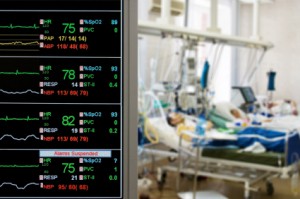
The ability to place a PICC in any critically ill, prone patient can expedite the administration of fluids and drugs by the critical care team and assist them in providing optimal care” Patrona-Aurand et al (2016). Abstract: Our hospital, a 220-bed, level-1 trauma center, sees an increase in patients with acute respiratory distress syndrome (ARDS) […]
How to successfully implement ECG PICC placement?
The following article outlines the use of a change process theoretical framework to plan, implement, and sustain successful outcomes with integration of electrocardiogram-placed peripherally inserted central catheters at a major metropolitan medical teaching facility” Wuerz et al (2016). Abstract: Health care is becoming increasingly complex. Introduction of new technologies can be overwhelming and complex. The […]
PICC tip malposition is a significant source of clinical inefficiency
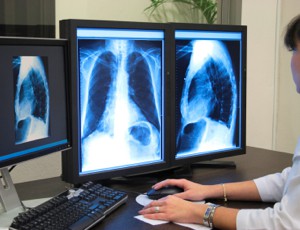
PICC malpositioning is a significant source of inefficiency, especially for inpatient services, that should be addressed to reduce expenditures and maximize patients’ perceptions of quality health care” Keller et al (2016). Abstract: Background: To assess the technical success of ultrasound (US)-guided peripherally inserted central catheter (PICC) placement at a large academic medical center and evaluate […]
Current status and future direction of health care in Spain
This article highlights the health care situation in Spain, which is mostly public and free for all citizens” Hernández and Miluy, G. (2016). Abstract: This article highlights the health care situation in Spain, which is mostly public and free for all citizens. The National Health System (NHS) is the entity that provides benefits and health […]
How to manage central line associated venous thrombosis in children

Central venous catheters (CVCs) account for the largest proportion of thrombotic events in pediatric patients. Questions remain regarding adequate treatment and prevention methods” Witmer et al (2016). Abstract: Central venous catheters (CVCs) account for the largest proportion of thrombotic events in pediatric patients. Questions remain regarding adequate treatment and prevention methods. We surveyed pediatric hematology/oncology […]
Needlestick injury prevention support for clinical staff

All professional groups must be encouraged to be more aware of the risks in disposing of sharps. Safe handling practices for disposal of insulin pens are needed in in- and outpatient care settings” Dulon et al (2016). Abstract: Background: Needlestick injuries (NSIs) are the most common cause of sharps injuries and pose a serious risk […]
How to identify power-injectable implantable arm ports?

The results illustrate that our local cancer center infusion nurses were a very experienced group who have been able to adapt to the 2 different arm TIVAD designs” Burbridge and Doell (2016). Abstract: Background: Patients in our health region received 1 of 2 different arm ports, totally implanted venous access devices (TIVADs), for the management […]
Anaphylaxis algorithm aids in the recognition and treatment of an anaphylactic reaction
The use of the Resuscitation Council Anaphylaxis Algorithm aids in the recognition and treatment of an anaphylactic reaction” Chapman and Lalkhen (2016). Abstract: Anaphylaxis is a severe, life-threatening, generalized or systemic hypersensitivity reaction. The pathophysiology of anaphylaxis can be described as immunologic and non-immunologic. Classification can be based on the time course of the anaphylactic […]
Extravasation wound management in neonatal intensive care units
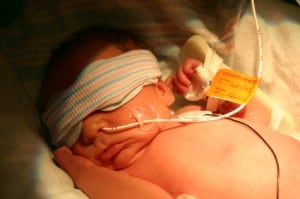
Among the 211 neonates observed, wound management was required in 10 cases of diaper dermatitis, 7 epidermal stripping, 6 extravasation injuries, 5 pressure ulcers, 1 surgical wound and infection, 1 thermal burn, and 5 other lesions” Meszes et al (2016). Abstract: BACKGROUND: Most of the skin disorders that occur in neonatal intensive care units are […]
MALDI-TOF-MS-based infection identification and patient management
Rapid identification of pathogens directly from positive blood cultures (BC) in combination with an antimicrobial stewardship programme (ASP) is associated with improved antibiotic treatment and outcomes, but the effect of each individual intervention is less clear” Osthoff et al (2016). Abstract: Objectives: Rapid identification of pathogens directly from positive blood cultures (BC) in combination with […]
Complex regional pain syndrome following venipuncture
Complex regional pain syndrome was suspected and triple-phase radioisotope bone scan was done which was highly suggestive of this diagnosis” Pruthi et al (2016). Abstract: Venipuncture is one of the most commonly done medical procedures. We report a unique case of a 23-year-old young male who presented with features suggestive of inflammatory arthritis. The symptoms, […]
Reduction of central-line associated infection in pediatric intensive care

To determine the central-line associated bloodstream infection rate after implementation of central venous catheter-care practice bundles and guidelines and to compare it with the previous central-line associated bloodstream infection rate” Rodrigues et al (2016). Abstract: INTRODUCTION: To determine the central-line associated bloodstream infection rate after implementation of central venous catheter-care practice bundles and guidelines and […]
Research on how to secure peripheral intravenous catheters
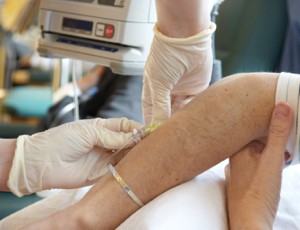
To assess the effects of peripheral venous catheter dressings and securement devices on the incidence of peripheral venous catheter failure” Marsh et al (2014). Abstract: BACKGROUND: Peripheral venous catheterisation is the most frequent invasive procedure performed in hospitalised patients; yet over 30% of peripheral venous catheters fail before treatment ends. [ctt link=”2yN72″ template=”1″]ReTweet if useful… […]
How do we identify CLABSI in burn trauma patients

With the implementation of patient safety initiatives such as the central line prevention bundle, there has been a considerable reduction in the number of CLABSIs except for patients with burn trauma” Hampe et al (2017). Abstract: With the advent of the Patient Safety Movement in the late 1990s and the CMS (Centers for Medicare & […]
Sustain registry report details CLABSI among home parenteral nutrition patients
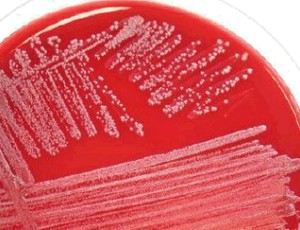
This is the first Sustain registry report detailing longitudinal data on CLABSI among HPN patients” Ross et al (2016). Abstract: Background: Home parenteral nutrition (HPN) is a high-cost, complex nutrition support therapy that requires the use of central venous catheters. Central line-associated bloodstream infections (CLABSIs) are among the most serious risks of this therapy. Sustain: […]
Jugular vascular access in resource-limited settings
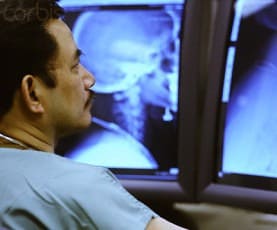
For the nephrologist practicing in resource-limited settings, vascular ultrasound is often unavailable; consequently, blind percutaneous puncture of large veins is often employed to establish vascular access for hemodialysis” Komolafe and Olatise (2016). Abstract: BACKGROUND: For the nephrologist practicing in resource-limited settings, vascular ultrasound is often unavailable; consequently, blind percutaneous puncture of large veins is often […]
Haemodialysis catheters or fistulas in elderly patients starting dialysis

The selection of the type of vascular access for haemodialysis is an important intervention question. However, only observational studies are available to inform decision-making in this area, and they are at high risk of selection bias” Quinn and Ravani (2016). Abstract: INTRODUCTION: The selection of the type of vascular access for haemodialysis is an important […]
CLABSI reduction following confirmed mucosal barrier injury laboratory-confirmed bloodstream infection
CLABSI rates decreased significantly in some location types after removing MBI-LCBI events, and MBI-LCBI events will be removed from publicly reported CLABSI rates” See et al (2016). Abstract: Central line-associated bloodstream infection (CLABSI) event data reported to the National Healthcare Safety Network from 2014, the first year of required use of the mucosal barrier injury […]
Update on central venous catheter-related biofilm infections
Although vancomycin remains the cornerstone of empirical therapy for CRBSIs caused by MRSA, combination of different antimicrobials and new approaches are indispensable to enhance the eradication of S. aureus biofilms and to manage the patient appropriately” Esposito et al (2013). Abstract: Central venous catheters are indispensable for the long-term treatment of seriously and chronically ill […]
Case study description of extra luminal entrapment of central venous guide wire
We report a case of 28 years old female patient presented in our emergency with history of entrapped guide wire in right side of neck during CVC” Ansari et al (2016). Abstract: Central venous Catheterization (CVC) is a commonly performed procedure for venous access. It is associated with several complications. We report a rare case […]
Using ultrasound-guided modified Seldinger technique during PICC placement
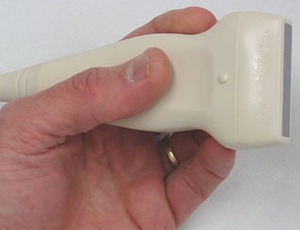
To observe and analyze the application effect of ultrasound-guided modified Seldinger technique (MST) in Peripherally Inserted Central Catheter (PICC) catheterization” Wang et al (2016). Abstract: OBJECTIVE: To observe and analyze the application effect of ultrasound-guided modified Seldinger technique (MST) in Peripherally Inserted Central Catheter (PICC) catheterization. [ctt link=”HxqIl” template=”1″]ReTweet if useful… Using ultrasound-guided modified Seldinger […]

